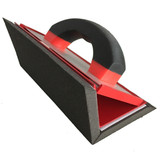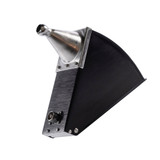Description
Ray’s Drywall Corner Sander quickly smooths and finishes inside corners of walls and ceilings. The sanders patented design uses FEATHERED WINGS to produce near perfect corners with ease—no gouging, no grooving and no cutting—every time. Its unique construction and design make it lightweight, fast and efficient. We Recommend using Ray’s Drywall Corner Sander with the BETTER-THAN-EVER TOOLS EXTENSION POLE (sold separately) or use adapter (sold separately) to thread sanding bracket onto standard painter’s pole, or handle with ¾ inch course thread head.
Details
Grit: |
120 |
Stand: |
No |
Grit: |
150 |


















